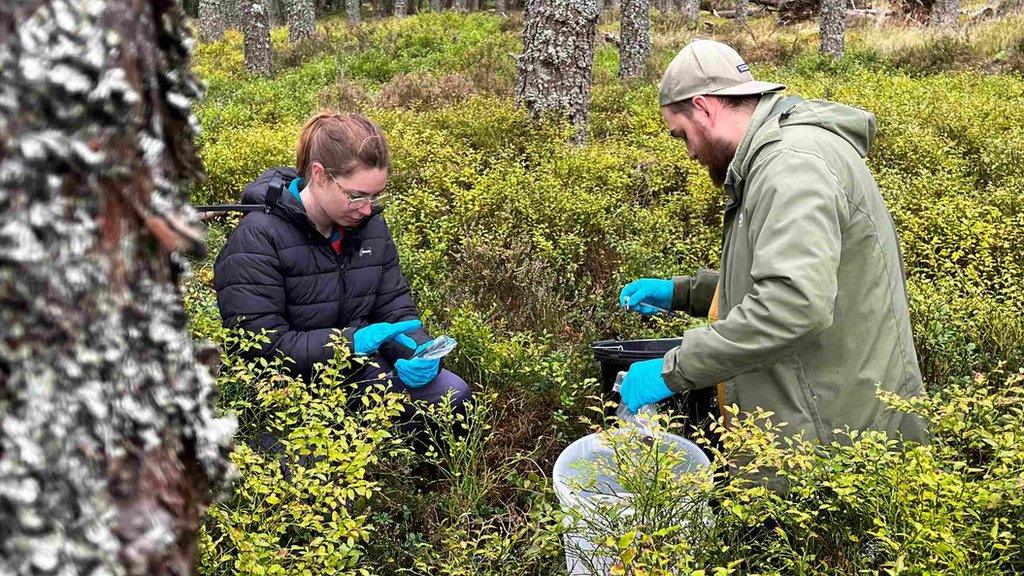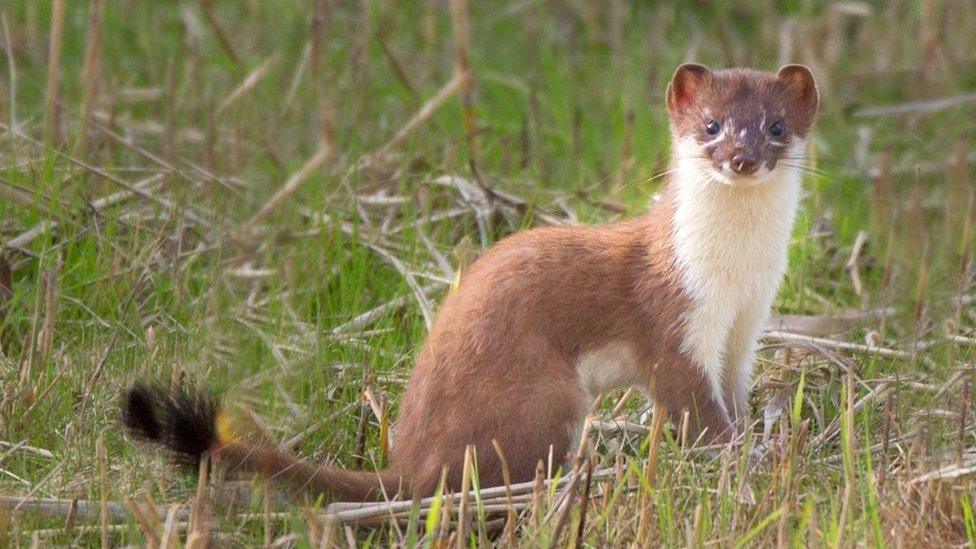Voles counted to protect Scotland’s endangered birds
- Published
Voles counted to protect one of Scotland’s most endangered birds
A research study in the Cairngorms is hoping to help protect one of Scotland's most endangered bird species by counting the number of voles.
The tiny mammals are an important food source for predators such as foxes and pine martens.
But when numbers are low, rare species such as capercaillie become targets for food.
By counting vole numbers, researchers can work out if they need to provide extra food to distract predators.
Studies have shown that the alternative food sources, such as deer carcasses, can be used to move predators away from threatened species when vole numbers are low.
Experts say vole populations tend to fluctuate over a cycle of about five years.

Researchers have been trapping and counting voles in Strathspey
Although numbers are currently high, it is likely that levels in Glen Feshie, near Aviemore, are about to plummet, meaning intervention will be required next year.
Counting by researchers from Forestry and Land Scotland (FLS) is being undertaken twice a year to determine their population cycle.
An estimated 100 tonnes of voles are living in the forests around Strathspey but that can drop to about 20 tonnes.
Owls, foxes and pine martens are among the species which target them as a food source.
Capercaillie numbers are at critically low levels with some estimates suggesting there are just 542 in Scotland.

Volunteers like Em Wilkinson count vole numbers twice a year
Kenny Kortland, FLS wildlife ecologist, said: "In order to protect and conserve capercaillie we need to understand the behaviour of all the predators and what they're eating.
"We're taking a precautionary approach and we're intervening in trying to affect the behaviour of their predators during the breeding season and hopefully that will reduce the predation of capercaillie even more."
The monitoring is part of the Cairngorms Connect predator project which aims to better understand the link between carnivores and their prey.
Pine marten numbers in particular have been steadily growing in recent years, placing additional pressures on populations of field mice as well as bank and field voles.
Habitat restoration and protection has also allowed birds of prey to thrive, including white-tailed eagles and hen harriers.
Em Wilkinson, a volunteer with Cairngorms Connect, said: "The voles that we have here are really the main prey for the predators that we have and so if we look at how many voles we have we get a better understanding of how the predators are doing as well."
Related topics
- Published24 September 2023
